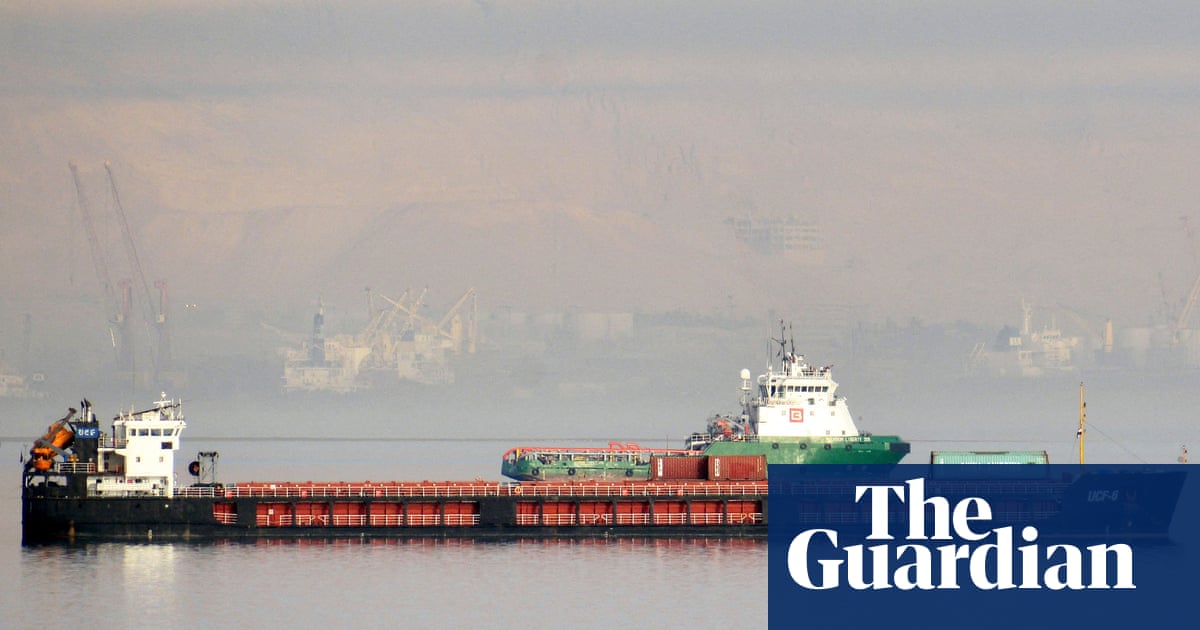Ukraine says it has bombed Russian ship carrying drone parts at Caspian port | Ukraine

Ukraine says it has conducted a long-range drone attack on a supply ship that it claims was carrying drone components from Iran, striking it at a port north of the Caspian Sea, in a show of force hours before Donald Trump and Vladimir Putin meet for a summit in Alaska.
Photographs showed a partially sunken cargo vessel at Olya, near Astrakhan, more than 500 miles from the frontline. Ukraine’s military claimed credit for the attack and the overnight bombing of an oil refinery at Samara on the Volga River, deep inside Russia.
Ukraine’s general staff said the ship hit, the Port Olya-4, was “loaded with components” for Shahed-type drones “and ammunition from Iran”. The port, it added, was an “important logistics hub for the supply of military goods”.
Kyiv’s forces have repeatedly shown they can strike military logistics and energy targets hundreds of miles inside Russia, although the attacks only appear to have a dampening impact on the Kremlin’s long-term war effort.
As the US president prepares to meet his Russian counterpart in Alaska to discuss ending the Ukraine war and other bilateral issues, Ukraine remains under pressure in the battle on land, as demonstrated by a breach in its defences in the eastern Donbas last weekend.
Several Russian saboteur groups pierced the Ukrainian frontlines by about 6 miles in a strategically important part of the front in Donetsk province near the road junction of Dobropillya, where supply routes had passed east to Kramatorsk.
On Friday troops from Kyiv’s elite Azov Corps were leading efforts alongside the 79th and 82nd brigades to mop up the infiltration, but the breach, while apparently contained, has not been eliminated.
On Friday Ukraine’s president, Voldoymyr Zelenskyy, said Ukraine was succeeding in “countering the attempts of Russian forces to gain a foothold” – and said a decision had been made to further reinforce the sector and the regional frontline.
Troop shortages and the sheer length of the active frontline, at more than 600 miles long, mean the point of contact is not continuously held. Instead, it is made up of a series of foxholes that Russian attackers seek to sneak past using small lightly armed deep reconnaissance groups (DRGs).
An intense Russian effort to achieve drone superiority in the sector since early May has made it more difficult for Ukraine to repel the infiltrators, according to Sam Cranny-Evans, a military analyst with the Royal United Services Institute thinktank.
The Russians, he said, had established “some form of aerial dominance” over the Pokrovsk area that had “enabled them to work on further isolating Ukrainian units in the area, hitting logistics vehicles moving to and from the front, as well as troop rotations”.
Ukraine, he believed, may “struggle to respond to a breakthrough with the available forces” as a result, a challenge compounded by the fact that units such as the Azov that are thrown into the frontline to deal with Russian infiltrations “are already stressed and extended from several recent deployments”.
Earlier this week, Zelenskyy described the attack as politically timed, and said Russia would use it to try to show US leaders it was gradually winning the war and that continuing support for Kyiv would be wasted.
On Friday, referencing the summit, the president added: “The Russian army continues to suffer significant losses in its attempts to secure more favourable political positions for the Russian leadership at the meeting in Alaska.”
Ukraine’s military released images of what appeared to be a significant fire at the Syzran oil refinery in Russia’s Samara region. The plant, the general staff said, “produces a wide range of fuels, including aviation kerosene” and supplied the country’s military.
The Russian governor of Samara said a drone attack caused a fire at an unspecified “industrial enterprise” but that it had been put out quickly.
The Shahed drones that bomb Ukraine’s cities nightly were designed in Iran, and earlier in the war Russia was dependent on supply from Tehran, with shipments travelling over the Caspian Sea between the two countries.
However, Russia now makes Shahed drones in two factories of its own after the technology was shared – meaning Iran, also weakened after its own war with Israel, is a less significant military support.
Source link

